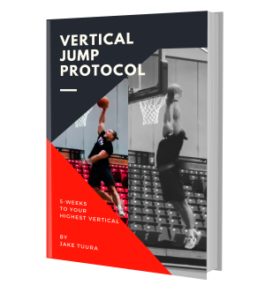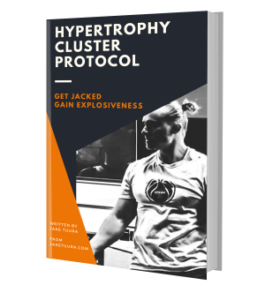Brent: “Here just a week ago, one of my friends Samuel Kwant tore his Achilles. It was jumping over this log and then turning that into a sprint. Typically in CrossFit what you’ll see is rebounding box jumps, whether they’re box jump overs or just repetitive jumping backwards off the box, landing with both feet and really quickly jumping back onto the box. You’ve seen Achilles ruptures, some really notable ones like 2012, one of the best athletes in the world, 2016, an Australian female athlete, Lethe Abun. So just, I mean, I’m kind of going through my head here, but tons of Achilles ruptures. And I think I’ve spoken to a lot of some of the best coaches in CrossFit about them. And I think there’s a lack of real understanding, like what’s going on there, what can be done to prevent it?”
Brent: “I think a lot of people just kind of avoid the rebounding box jump because they’re afraid of it in training and then it is programmed less and less in competitions than it used to be.”
Brent: “Repetitive rebounding box jumps is the big culprit that we see at least the incident of the rupture… and the body is going to be tired. Whether it’s from workouts prior in the day, prior in the week, or just movements, you might be doing heavy deadlifts into rebounding box jumps, which maybe that’s part of the cause.”
Brent: “What can you do in training to reduce the risk with rebounding box jumps? What can be done in the days and the weeks and the months leading up to reduce that risk of a rupture.”
Jake: “The first thing is just physical preparation. ⁓ are you physically prepared for, for what you want to do?”
Jake: “No one’s really training calves in the first place. Like who is dedicating time to training calves? But if you think of any strength and conditioning plan, we’re gonna do stuff for the upper body, pushes and pulls, rotator cuff. You’re gonna do quad, hamstring, glutes. You’re gonna do forearm work maybe, neck work. You’re gonna do everything that you know. And then the calves were just like, you train those when you do jumps and you train those when you do running you know they get it they get a ton of foot contact so they’re fine.”
Jake: “Maybe that’s why we’re running into more Achilles tendinopathy and Achilles ruptures is because we’re not treating the calves and Achilles like a strength coach. We’re just saying, that takes care of itself.”
Brent: “I can say with absolute confidence that I competed at a high level for 12 years and I don’t think I ever did a calf raise weighted or unweighted for that matter.”
Brent: “Since 2016, you’ve seen less and less rebounding box jumps in competition. And then the preparation mirrors that where you will see less and less coaches programming them.”
Jake: “You have three sub tendons of the Achilles tendon and depending on what you’re doing, you’re going to load certain aspects more than others. So if you’re doing the same thing, you’re going to be loading certain portions of the tendon and then not loading certain portions of the tendon as well. You’re making the stronger aspect of the tendon stronger and the weaker aspect of the tendon weaker.”
Brent on structural development in CrossFit: “I would say the three most common injuries in CrossFit are low back, knees and shoulders. And so because of that, there is definitely a culture where people are doing strengthening specifically around the low back, knees, and shoulder.”
Jake: “As you get more fatigued, you’re more likely injured. But also as you get more fatigued, it’s protective of injuries because your outputs are much less. So it’s like your muscles don’t have the same outputs to yank on tendons to rupture them. So in that sense, fatigue is protective. But when you take something like the rebound box jump, it’s not protective anymore because you have to drop off this 24 inch box and that’s set. You can’t change that 24 inch box.”
Article on this podcast: https://www.professionalfitnessathletesassociation.org/achilles-training
Brent on Instagram: https://www.instagram.com/fikowski/
Website: https://brentfikowski.com
PFAA: https://www.professionalfitnessathletesassociation.org


